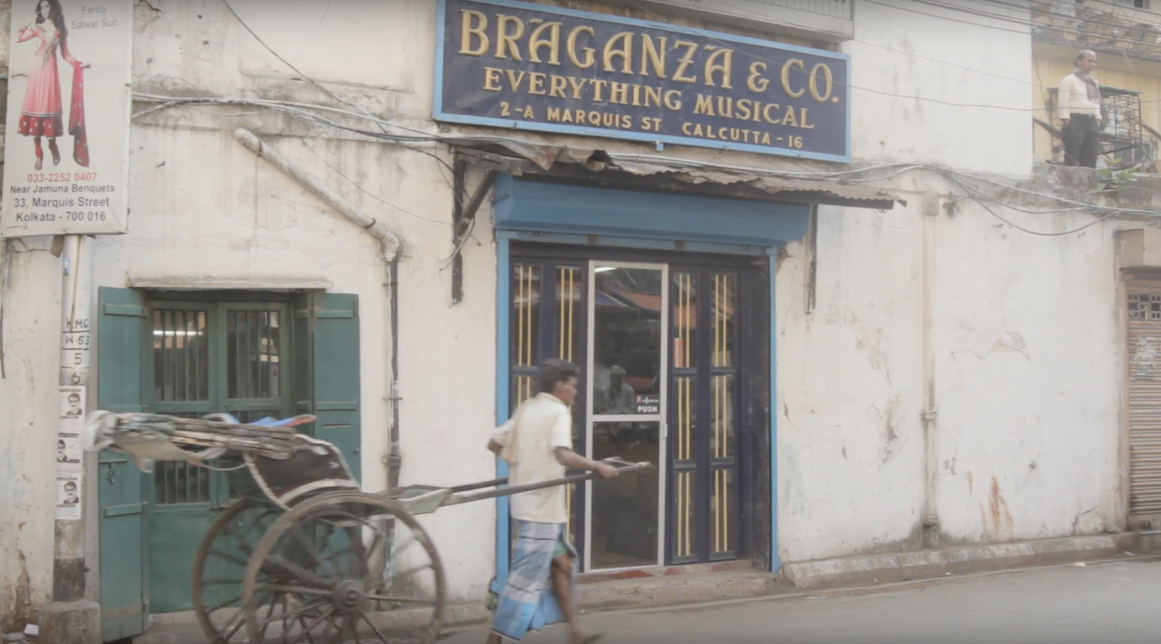How did the piano become a Bengali instrument? A documentary has some answers

Subha Das Mollick’s ‘Calcutta Sonata’ looks at how the piano became an integral part of the cultural fabric of Calcutta.
“Nobody remembers when the first piano was disembarked from the ships that docked by the shores of the river [in Calcutta],” declares the narrator early on in Subha Das Mollick’s documentary Calcutta Sonata. What the city does remember is how another majestic creature, the elephant, arrived in the city. Mollick shows an old pencil sketch of the pachyderm about to be dropped off from a ship at the docks in Calcutta. She tweaks the image and draws a piano in the place of the elephant to ask, could this be how the piano entered the city too?
A filmmaker and professor at ilead – Institute of Leadership, Entrepreneurship and Development, Mollick attempts to trace the piano’s physical and sonic sojourn in Kolkata through her 58-minute documentary. She begins by recording anecdotes about the first sightings of the instrument and slowly uncovers the story of how the piano came to be such an integral part of the cultural fabric of Bengalis in Calcutta.
The idea for Calcutta Sonata came to Mollick at a discussion in 2014 at her college with a few professors from Cambridge University. “The occasion was 400 years of the India-Britain relationship,” Mollick recalled. “There were discussions on the coming of the Railways, on setting up of corporate houses like Shaw Wallace and Imperial Tobacco Company, on tea and opium trade. Somebody mentioned cultural influences and music. In my mind I began to hear the sound of the piano – particularly, Rabindra Sangeet being played on the piano. I asked myself, when did the first piano come to Calcutta?”
The harmonium is another instrument with western origins. But nothing comes close to the piano, especially in terms of “the spectrum of sound produced and the grandeur of look”, according to Mollick.
“I realised that the piano was in many ways instrumental in introducing western musical concepts to the Indians,” Mollick explained. “My well-to-do relatives had pianos in their homes and their children took piano lessons. The piano became a status symbol for the westernised Bengali. I instinctively realised that there was a story here – the story of gradual assimilation of the piano into the cultural fabric of the city. I started meeting pianists, piano teachers, piano tuners, went to workshops that repair old pianos and I started reading up about the piano.”
The result, three years later, was Calcutta Sonata, which frames the story of the majestic 88-keyed instrument against the still-existing Victorian structures of Kolkata, which, like the piano, remind the city of its colonial past.
The West meets the East
“A bridge between the aural experience of the Orient and the Occident” is how Mollick describes the piano in her documentary and substantiates it using detailed interviews with music scholars, teachers and artists, apart from excerpts from Rabindranath Tagore’s Reminiscences.
She even briefly toys with the possibility that the piano could have originally been an Indian instrument as she hears music scholar Sarbhananda Chowdhury mention the ancient Katyayan veena, a hundred-stringed instrument that perhaps travelled from the East to West over 2,000 years. Did this veena eventually return as the piano? The charm of Calcutta Sonata lies in the fact that it lays out all these stories and theories and lets the viewer judge for themselves.
Calcutta Sonata is also expectedly as much a music lover’s delight as it is a cinema connoisseur’s. The grand old pianos – and Mollick treats us to some rare, old ones – in all their vintage glory make for compelling visuals of course. But Mollick ensures the piano’s story, especially the change it effected and underwent when it came in contact with Indian classical music, is narrated and demonstrated musically as well as it is done through interviews. What marks some of these portions is the simplicity with which most of her interviewees explain key musical aspects such as the difference between the Indian melody and the Western harmony or what an Italian way of playing a raag could mean.
“The main challenge with this film was in moulding the rushes into a structure,” she said. “It took a long, long time. Also the complexities in the information had to be simplified. I had to take tough decisions on which pieces to throw away and which ones to include.”
Calcutta Sonata is also a film about the city that made the piano its own. “Whenever European innovations travelled to the Orient, Calcutta was the first Indian city to receive them,” says Dr Devajit Bandopadhyay, a music scholar, in Mollick’s film. “That is why Calcutta rose to the status of the ‘second city of the world’”.
Was there a rival to the piano when it first came to Calcutta?
“The only instrument that can rival the piano is the pipe organ,” Mollick said. “And, Calcutta has only one pipe organ which has now fallen silent because the organist died a few months back.”
The Calcutta that Mollick’s documentary covers includes scenes inside the homes of wealthy Bengalis who have inherited the piano from their forefathers to the sounds of Burrabazar and how they influenced music to finally, Park Street and its restaurants which were excellent hosts of jazz music. The piano found a place in all these contexts. (The film also features what is perhaps the last interview that veteran jazz guitarist Carlton Kitto gave before his death in 2016.)
Yet, Mollick feels there are more facets to the piano’s story in Calcutta, some of which she hasn’t included. “I could not include how the piano has influenced Bengali cinema even though it was one of the first things I thought about before making the film,” she said. “Not only were tunes composed on the piano by Satyajit Ray, Raichand Boral and the others, but the piano was also a mandatory mise-en-scene in so many Bengali movies. The Bengali hero was always seen playing the piano. If I get a chance to make Calcutta Sonata part two, I’ll include these things.”
By Archana Nathan. This article first appeared on Scroll.in





